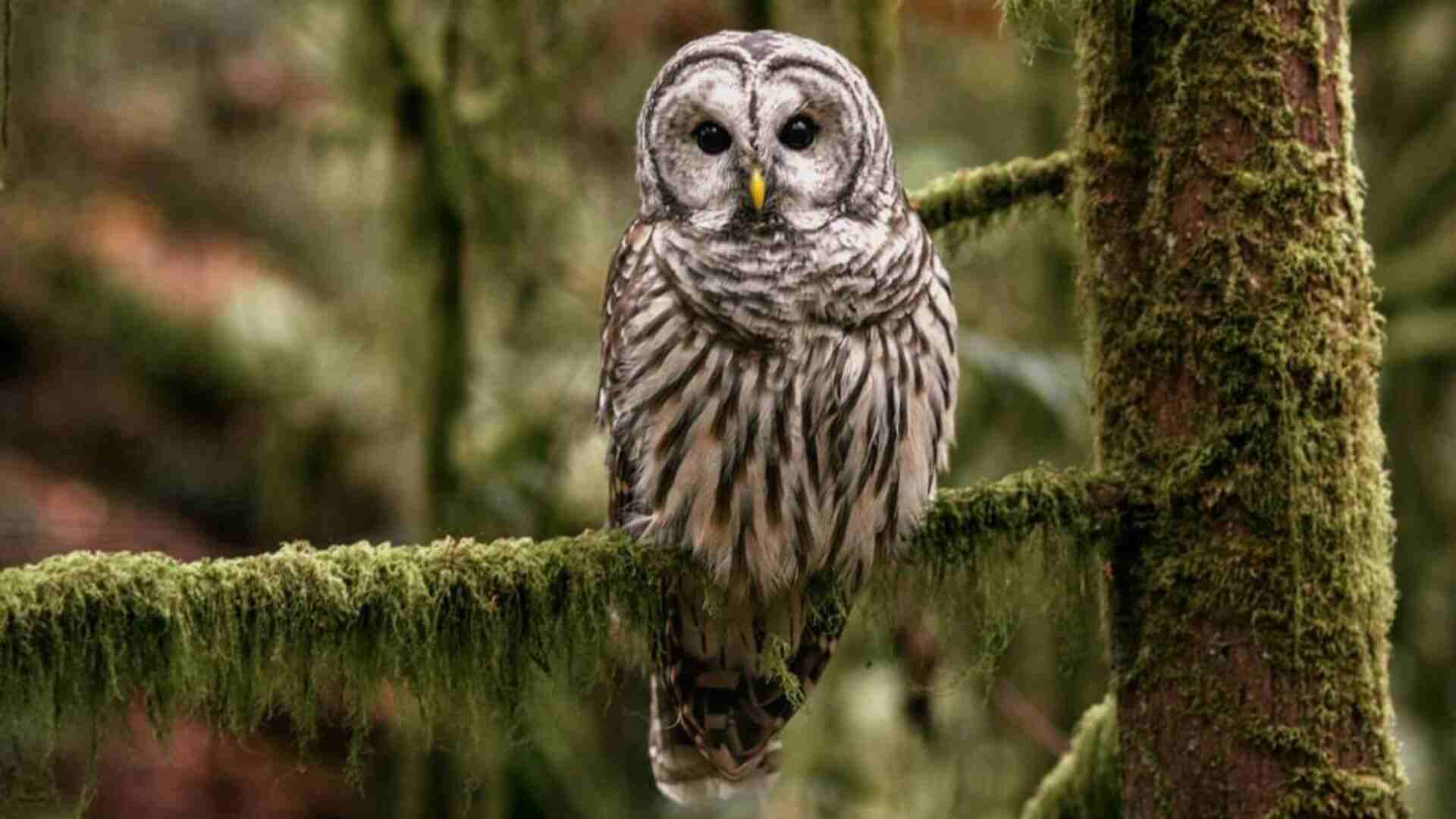To protect the threatened spotted owl from possible extinction, U.S. wildlife officials are adopting a controversial strategy: deploying trained marksmen into dense forests along the West Coast to eliminate nearly 500,000 barred owls that are displacing their smaller counterparts.
The strategy unveiled by the U.S. Fish and Wildlife Service on Wednesday aims to bolster dwindling spotted owl populations in Oregon, Washington state, and California. The Associated Press obtained advance details of the plan.
According to documents released by the agency, up to approximately 450,000 barred owls are slated to be shot over a span of three decades. This measure comes after barred owls from the eastern United States expanded into the territories of two native owl species on the West Coast: the northern spotted owl and the California spotted owl. The smaller native owls have struggled to compete with the invaders, which produce larger broods and require less space to thrive compared to spotted owls.
Previous conservation efforts aimed at protecting the forests inhabited by spotted owls have sparked contentious debates over logging but have also contributed to slowing the decline of these birds. However, the increasing presence of barred owls in recent years has undermined these earlier conservation gains, according to officials.
“Without actively managing barred owls, northern spotted owls will likely go extinct in all or the majority of their range, despite decades of collaborative conservation efforts,” said Fish and Wildlife Service Oregon state supervisor Kessina Lee.
The idea of eliminating one bird species to protect another has caused a rift among wildlife advocates and conservationists. While some reluctantly support the plan to cull barred owls, others argue that it detracts from essential forest conservation efforts and is a risky approach.
“The Fish and Wildlife Service is turning from protector of wildlife to persecutor of wildlife,” said Wayne Pacelle with the advocacy group Animal Wellness Action. He expressed skepticism that the program would succeed, citing concerns that the agency may struggle to prevent additional barred owls from migrating into areas where some have been eliminated.
Officials indicated that the shooting of barred owls is expected to commence next spring. The approach involves using megaphones to broadcast recorded owl calls to attract the barred owls, followed by shooting them with shotguns. Carcasses will be disposed of by burial at the site.
Researchers have already been removing barred owls in some spotted owl habitats, totaling around 4,500 since 2009, according to Robin Bown, the barred owl strategy leader at the Fish and Wildlife Service. These efforts have targeted barred owls in areas like California’s Sierra Nevada, where officials are keen to prevent their populations from becoming established.
While officials aim to reduce barred owl numbers in more established areas, they acknowledge that shooting alone is unlikely to eradicate them entirely. Supporters of the plan include the American Bird Conservancy and other conservation organizations.
Steve Holmer from the bird conservancy noted that barred owls are not native to the West. He described the killing as regrettable but suggested that reducing their numbers could enable them to coexist with spotted owls over the long term.
“As the old forests are allowed to regrow, hopefully coexistence is possible and maybe we don’t need to do as much” shooting, Holmer said.
The planned killings of barred owls are expected to reduce their national population by less than 1%, according to officials. This is contrasted with the potential extinction faced by spotted owls if the issue is left unaddressed.
Public hunting of barred owls will not be permitted. Instead, the wildlife service intends to authorize government agencies, landowners, American Indian tribes, or companies to carry out the killings. Shooters will be required to demonstrate their training or experience in identifying owls and handling firearms.
The release of a final environmental study on the proposal in the coming days will initiate a 30-day comment period before a final decision is made.
The barred owl management plan follows decades of conflict between conservationists and timber companies, which have historically harvested large areas of older forests where spotted owls reside. Early efforts to protect the birds led to logging restrictions in the 1990s, causing controversy within the timber industry and among its political supporters in Congress.
Despite these measures, spotted owl populations have continued to decline since barred owls began appearing on the West Coast several decades ago. Katherine Fitzgerald, who heads the wildlife service’s northern spotted owl recovery program, noted that across various study sites in the region, at least half of spotted owls have been lost, with some areas experiencing losses exceeding 75%.
Critics argue that the widespread culling of barred owls could significantly disrupt forest ecosystems and increase the risk of mistakenly shooting other species, including spotted owls. They also contest the assertion that barred owls are unnatural to the West Coast, viewing their expansion into new territories as a natural ecological process.
Scientists indicate that barred owls migrated westward through either of two pathways: across the Great Plains, where planted trees by settlers provided them new habitats; or through Canada’s boreal forests, which have become increasingly suitable due to rising temperatures linked to climate change.
The northern spotted owl is federally listed as a threatened species. In 2020, federal officials acknowledged the species’ ongoing decline and considered upgrading its status to the more severe “endangered” designation. However, the Fish and Wildlife Service declined to make this change, citing prioritization of other species at that time.
Last year, federal protections were proposed for California spotted owls, with a decision currently pending.
During the administration of former President Donald Trump, habitat protections for spotted owls were removed following pressure from the timber industry. These protections were reinstated under President Joe Biden after the Interior Department determined that political appointees during the Trump administration had used flawed scientific reasoning to justify the weakening of these protections.






















